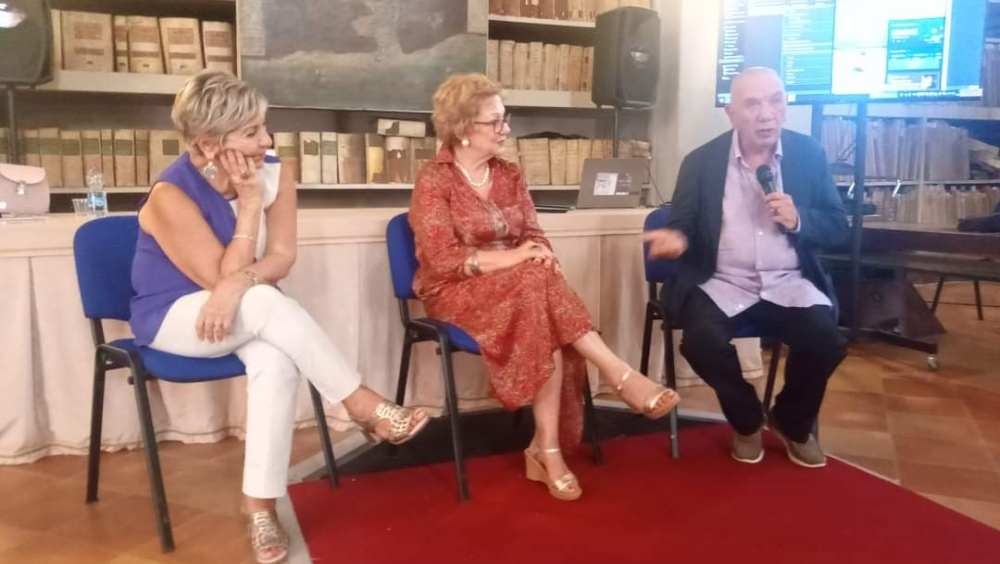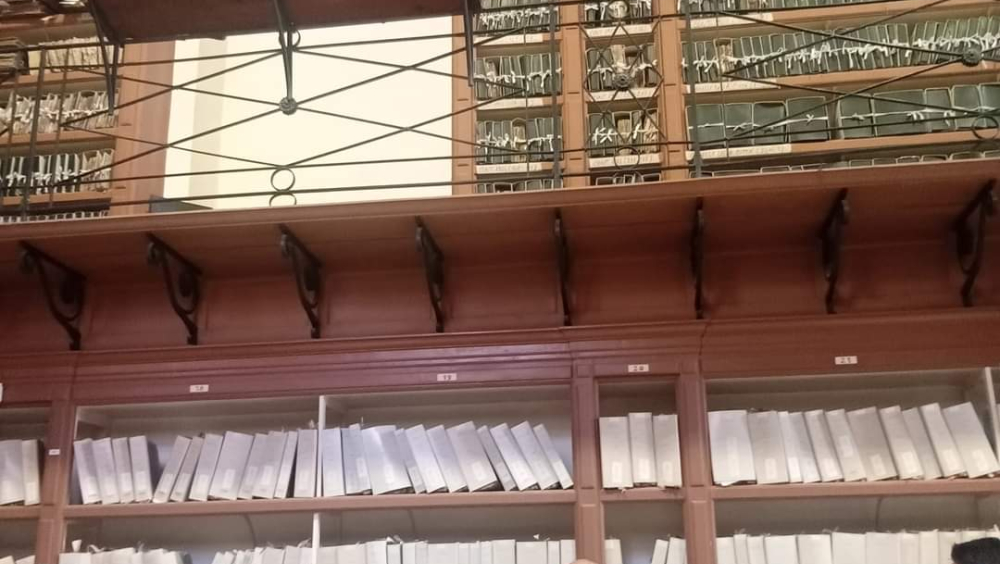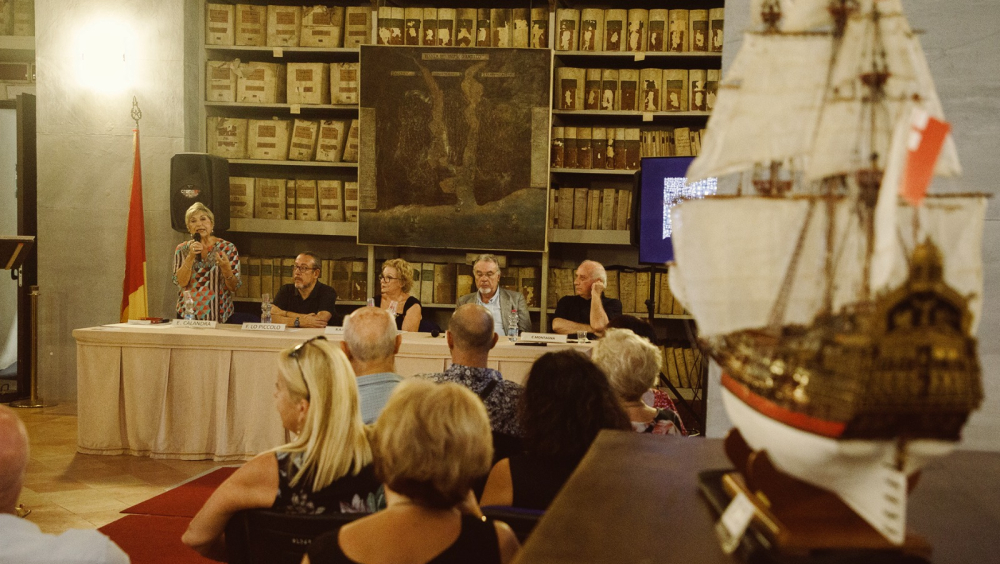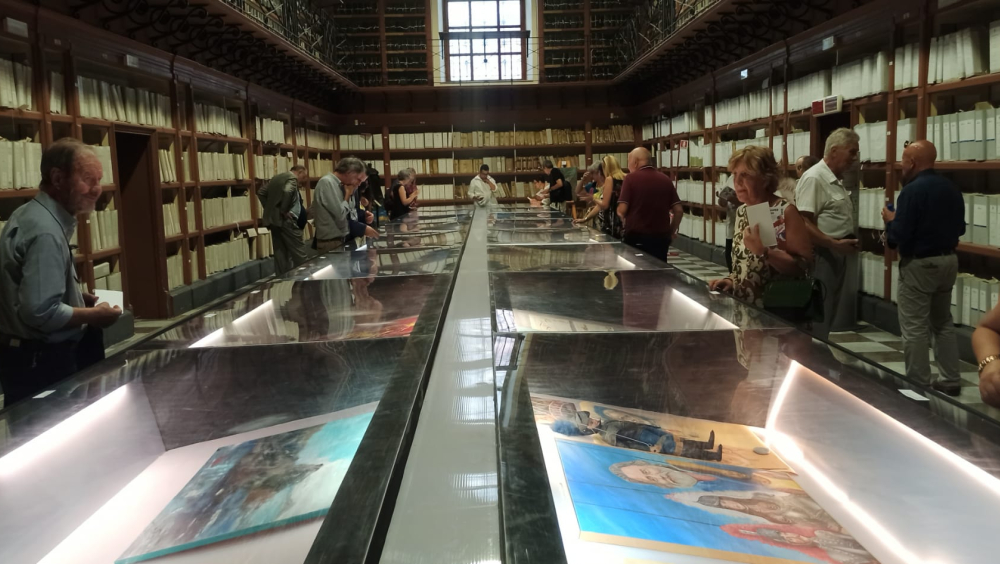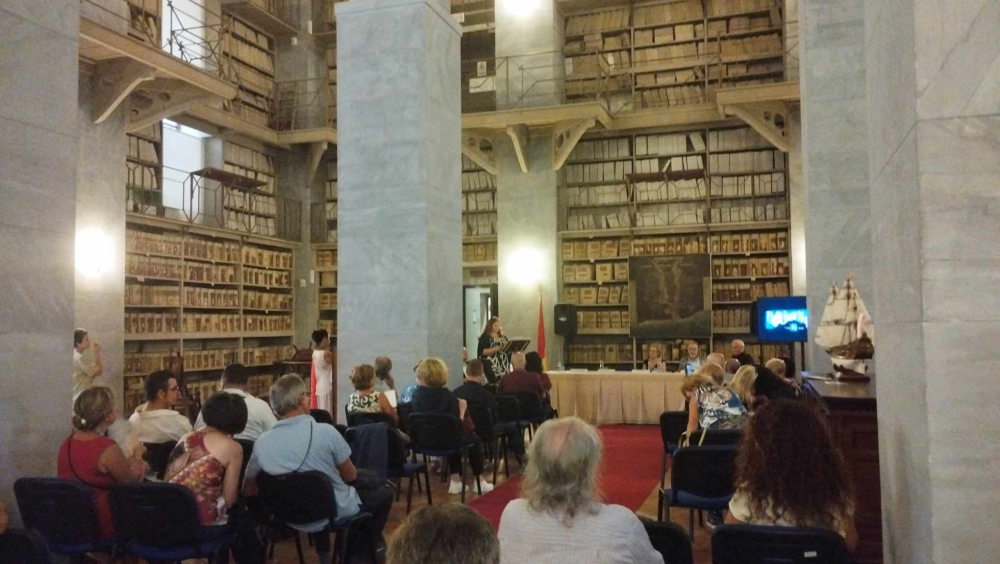Educate about beauty
Premise
Sicily is a thousand-year-old island and its territory is rich in historical stratifications from all eras and dozens of peoples who have deposited cultures and memories there. Its position in the center of the Mediterranean has represented an attractive crossroads of innumerable riches and traces of this can be found in its territory and along the entire perimeter represented by the succession of its numerous landing points.
Its people are used to contact with art and history and this closeness is natural wherever you go. But our century has also produced alienating places, where overbuilding has created a sort of prevailing inhumanity.
Among the most important aspects of the Faro Convention there is one that supports our society more than any other: the "right to heritage" from which derives the ability to identify cultural heritage with the consequent protection and transmission to future generations.
The creation of the “Faro Librino Community” according to the Council of Europe Framework Convention for the value of cultural heritage for society.
History "Educate about beauty"
Librino and its foundation
With the great demographic expansions of the past century, urban suburbs emerged in all Italian cities. From north to south Italy was a proliferation of ghettos in a country incapable of governing the territories. From this moment the demand for housing becomes pressing and the construction sector is perceived as an opportunity and thus finds fertile ground for speculative businesses in which it is always the poorest society that pays.
Librino on the outskirts of Catania is the newest and most populous of the built neighborhoods, a sort of ghetto on the outskirts of a busy city rich in art and history.
But Librino was born from good intentions.
Built following the General Master Plan adopted in 1964, on the southern outskirts of the city, the Librino district, in the design intentions of the architect Kengo Tange, developed respecting the orography of the territory and modulating a system of ring roads around the residential nuclei.
All alternating with portions of greenery between public facilities such as Centres, Services, universities and various hospitality businesses. But this project never became operational!
The area was the subject, however, of wild illegal construction which disfigured its urban configuration, creating what the philosopher Marc Augè defines as "Nonplaces": that is, spaces devoid of identity, history and relationships.
At the beginning, Librino was a shapeless neighborhood, devoid of basic services but also devoid of social references that everyone can rely on to meet human, social, religious and medical needs.
Librino immediately raises the criminal potential by increasing drug dealing and petty crime and consequently there is a high number of school dropouts. The ghetto was born! In terms of Heritage, we cannot speak of tangible or intangible heritage as in these places there is no value to be cultivated.
But what role, if any, does value hold in such an alienating place? Edgar Morin (President of the European Agency for Culture UNESCO) calls "community of destiny", a sense of belonging that binds men and the earth: "we learn to feel part of a group, not feel like islands in desolate oceans".
For all this to happen, a "dreamer" is needed, a man who gives himself a special mission. Thus, almost as if he came out of a cylinder, here is the artist and patron Antonio Presti. In 1999 he began to deal with Librino and a satellite city of only 70,000 inhabitants.
Artist and patron, Antonio Presti, cultivates art and beauty and shares it entirely. It unveils, one after the other, a number of projects involving 10,000 children and their families in a contamination of high educational value. Presti wanted hope to become art starting from the younger generations.
«Having people who find themselves in a situation of discomfort, or risk express their inner beauty – underlines Presti – is a way that can revive imploded emotions in places where depression is not just the deprivation of things, nor just a lack of roads, services and structures that the population needs, but which we artists cannot provide, but it can recontact the soul of men through beauty and from this awareness of being beautiful a new conscience of the inhabitants of the neighborhood can be born".
The challenge is to overturn the usual approach to development, not starting from the economy as the engine of growth but from ethics, art and beauty. Art with its potential for life and creativity can undermine the "emptiness of hearts". In this way, its being a periphery is canceled out and the center is brought back to the Librino district. The redemption of the young people of a neighborhood born without squares, without meeting places, without sports services, without a sewage system starts again from centrality: a nothingness that risked swallowing up men and things.
...“I don't want sewers, I want flowers for Librino”...
And in 2001 the flowers arrive with the poets who recite their verses on the train that leaves from Librino and travels around Sicily to return to Librino. But other events bring flowers to Librino: in 2004 Antonio Presti revives the Grand Tour with which intellectuals have come to Italy since the seventeenth century to complete their educational journey.
Thus was born a trip to Sicily, towards Librino: seven internationally renowned writers who agreed to come and meet the boys from Librino who in exchange performed plays, dances and produced drawings based on the novels of their respective authors: the Mexican Paco Ignazio Taibbo II, the Israeli Meir Shalev, the Russian Sergej Bolmat, the Algerian Rachid Boujedra, and the writer Aminata Dramane Traorè.
These meetings involved the Librino schools: .C. V. Brancati, I.C. Cardinale Dusmet, I.C. Campanella – Sturzo, I.C.Fontanarossa, I.O. Angelo Musco, I.O. Pestalozzi, I.C. San Giorgio, I.P. Mary Poppins, Foundation Cirino La Rosa. The writers spoke about their experience as young people, sometimes disadvantaged and forced to obey a regime that deprived them of freedom but precisely for this reason they developed a thirst for democracy that trained them in the values of freedom and justice. The kids also talked and asked questions that demonstrated their interest and curiosity. Thus the young people of Librino and all the inhabitants of the neighborhood shared experiences, and thus Europe arrived in Librino.
For an exhaustive reading of all the projects carried out in Librino by Antonio Presti, please refer to the link: https://www.ioamolibrino.it/librino-questo-conosciuto/
The Faro Convention Cultural Association through the Faro Librino Community places itself in the territory in support of Antonio Presti's work to implement the EU objectives by guaranteeing communication policies in a language understandable to local citizens and listening to them with respect of the principles of participation and openness to local problems.
Librino expresses the emblem of the Faro Convention
Cultural heritage is that set of resources inherited from the past that society identifies as an expression of its values and traditions.
If to express the concept of Cultural Heritage it is necessary, first of all, to have the tangible and/or intangible cultural heritage to be safeguarded, protected and valorised, Antonio Presti has done much more: he has considered all the inhabitants of Librino as cultural heritage and has given them value , realizing the most important principle of the Framework Convention for the value of Cultural Heritage for society, that is, the central role of the person as the objective and purpose of heritage protection.
If we consider the "new" notion of cultural heritage as defined by the Council of Europe Framework Convention on the value of Cultural Heritage for society, in which the emphasis is placed not on the object to be protected but on the collective subjects , we approach the real problem that the Librino community faced: the absence of the heritage to be protected.
Antonio Presti understood that it is the people who must be valued: them, the boys, the men and women of Librino and with a maieutic operation he was able to extract the values from that disoriented humanity, from a "non-place". He also overcame another great obstacle: teaching the children and young people of Librino, accustomed to the streets, to do a job with their manual skills and without any tools other than their hands.
“Making inner beauty expressed” was the key that allowed us to restore identity where there couldn't be one and to those who couldn't have it. In 2009 that miracle took place thanks to Antonio Presti: it was called the Door of Beauty. A work that lasted 10 years which the artist and patron, president of the Fiumara d'arte Foundation, inaugurated with the 100,000 inhabitants of Librino, thus starting the ambitious "TerzOcchio Meridiani di Luce" project.
An overpass that cuts the neighborhood in two along its 1.5 km, made up of 45 terracotta bas-relief works created by artists, architects, art schools, associations and as many as 20,000 children and mothers from the Librino neighborhood.
This is a Heritage Community of Faro Librino that recognizes the identity value as its own heritage and intends to work so that there is value to pass on to future generations. In 2023 another miracle takes place with the Butterfly Gate. The two works constitute the first creations of that widespread museum announced by Antonio Presti and created with the contribution of the new generations who are reborn through ART and KNOWLEDGE.
The Butterfly Gate is the result of three years of commitment and involved 15,000 people from Librino: children, parents, condominiums and local associations as well as 5,000 students from 20 artistic high schools from all over Sicily: Emilio Greco from Catania, Angelo Musco from Catania, Renato Guttuso from Bagheria, Bonaventura – Secusio from Caltagirone, Diego Bianca Amato from Cefalù, Renato Guttuso from Giarre, Raffaele Libertini from Grammichele, Ernesto Basile from Messina, Matteo Raeli from Noto, Eustachio Catalano from Palermo, Mario Rapisardi from Paternò, Galileo Ferraris from Ragusa, Manzoni F. Juvara from San Cataldo, Ciro Michele Esposito from S. Stefano di Camastra, G. Bonachia from Sciacca.
While the artists involved and who worked in direct contact with the Librino students are: Vincenzo Buccheri, Ezio Cicciarella, Alberto Criscione, Gaetano Di Gregorio, Gloria Di Modica, Graziano Marini, Tamara Marino, Pierluigi Portale, Antonio Privitera, Braian Ramirez, Lara Riguccio, Giovanni Robustelli, Vittoria Spoto, Stefania Vasquez, Marilù Viviano. With active participation and exceptional involvement.
The Heritage Walk for the inauguration of the Door of Beauty was on 14-15 April 2023 with the visit of the monumental works Door of Beauty and Door of Butterfly, in the presence of all of Librino and the Sicilian institutions involved.
“...a real wall of the soul... Caterpillars become butterflies: from a creeping condition dictated by this contemporaneity to the sensation of freedom of the Soul; from the darkness of the pandemic to the Light of rebirth; from the clouding of consciences to the Joy of life... this is how the new Butterfly Gate will be born: a passage that will restore the dream".
“The most powerful weapon we have at our disposal is Knowledge, says Antonio Presti, knowledge sets us free while ignorance subjects us to slavery. But the true cure of the soul is the dream.”
Focus on the links between heritage, history and culture.
A community devoid of cultural heritage references and which has achieved through making art, transmitting the artisanal and artistic knowledge of ceramics: not a work historicized in its recognized historical and artistic value and in which men find an identity reference by developing a know-how between knowledge and skills that are useful and transmissible to all, adding ethical-cultural value to artistic creation and, as if that were not enough, expendable for their own future. But so that its effectiveness is not reduced, Antonio Presti will involve not only acclaimed artists from the contemporary art scene but young students from art high schools and also from Fine Arts Academies in a contamination of art and creativity.
A transmission of knowledge makes this story a unique example in the world, capable of acting as a sounding board for other initiatives in other disadvantaged places. The project also involves the creation of a Widespread Museum of Contemporary Art which will expand further, invading the streets and the façades of the buildings, giving life and hope where previously emptiness reigned and the dusty streets were a place of drug dealing and crime.
This Heritage Community deserves the credit of having developed the correct tools to clearly affirm the institution of democracy capable of enhancing the eco-territorial dimension of the place. The Door of Beauty of which the first part dedicated to the Great Mothers represents a tribute to the matriarchal society of Librino where women take charge of the family, women who, as Antonio Presti says "must be given sacredness".
This will be recognized (and already is) by the small artists of Librino as a teaching: an altar made up of portions of terracotta as fragments of a universal love to be looked at with respect and towards which to nourish the care and attention necessary to safeguard and protect the their identity. This operation of building local culture appears to be an incredible tool for strengthening human rights, citizenship, democracy and cultural integration. It will not be a place "like" other places but a place characterized by uniqueness.
It is a long job that will require time and dedication so the completion of the kilometre-long wall will see generations of students working and reflecting on the works and their literary, artistic and historical meanings.
Each Librino project is full of meaning and represents a moment of great teaching for all young people and the link between heritage, history and culture becomes real in its absence in the ceramic tiles designed to convey history and culture.
The Butterfly Door is an example of this as it embodies the difficulties of life that every child, in their educational growth, faces at least once in their life.
The “Butterfly Door” says Presti, “refers to the vision of a child who can go through a dark, dark moment, just like the caterpillar. However, it can always see the light and in an instant can transform into a butterfly: I would like to convey this vision of suspension and dream against the heaviness of this contemporaneity, to restore lightness to a state of the soul that risks imploding in its gravity. On the one hand there are all the inhabitants who continue the process of sharing with the artists, on the other the children, on a growth path in which they must take on ethical, political and cultural commitments. Because power is knowledge, ignorance is slavery. And with Beauty we can grow free citizens, citizens educated no longer to ask, but to do."
The numerous events and the many heritage walks are precious documents that attest to the strong cultural impact that the Faro Librino Heritage Community has created in the local and regional territory. Young students are the most important recipients of this great contemporary art museum that is Librino! The truly great, immense work consists in having given them the knowledge of an artistic language, or rather of many artistic languages because we are talking about photography, sculpture, ceramics, but also philosophy, literature, poetry, digital techniques and all this will remain in their baggage cultural and will never go away!
The Butterfly Door or Door of Knowledge, includes a work entitled “Và Pensiero” which represents a temple that is collapsing due to the advance of a serpent: it is ignorance that envelops the columns and becomes slavery; the work warns against illiteracy but the temple is recomposed in Kalokagathia, because goodness and beauty restore knowledge and freedom. In the temple that risks collapse, the shafts of the columns are made of books on the backs of which the titles can be read: not only local knowledge but that of all of Europe is contained there.
The Faro Convention Citizens of Europe Association is proud to facilitate the formation of the Faro Librino Heritage Community because we are now "Citizens of Europe" by merit and not just by hope and if Antonio Presti knew how to sow beauty, certainly reaping the fruits will not it will only be Librino but all of Sicily and Italy, and even Europe to which we will have given the example that art can save the world.
The European Heritage Days 2023 edition featured not only the children and all the young people of Librino but also involved all the young students of the artistic high schools and Fine Arts Academies of the Sicily Region with a truly strong teaching and training capacity considering also the involvement of artists from the contemporary scene.
The final moment of the European Heritage Days took place with the conference held at the Department of Architecture of the University Faculty of Palermo dedicated exclusively to the "Faro Convention: Strategies and opportunities for an informed use of Cultural Heritage".
The European Heritage Days are the participatory cultural event most commemorated by
European citizens. Launched by the Council of Europe in 1985, the event can boast one participation
by the public of 20 million visitors every year, generating, by far, the greatest value
of any European cultural project.
The Faro Convention Ciizens of Europe association represented by the architect Rosa Anna Argento,
was born with the desire to pursue the objectives of the Framework Convention of the Council of Europe for the Value of Cultural Heritage to Society, known as the Faro Convention by its name
of the Portuguese city.
“Having adopted the principles of the Faro Convention for the management of our Association
it means clearly identifying the intellectual and cultural objective, pursuing it with tenacity and
work to transmit it to the society of our territory. By becoming aware of the right to
cultural heritage the company strengthens that spirit of protection and safeguard that the whole community must feel to achieve a more just and democratic development.”
Held in September each year, the EHD events – called Heritage Open Days – take place in
countries that are part of the European Cultural Convention. During this period, the Faro Convention Citizens of Europe Association organizes art exhibitions, cultural events and educational courses one after another, allowing European citizens to visit and learn about their common cultural heritage and encouraging them to participate in the protection and valorization of this heritage for present and future generations.
